Related by Category
Related by City - Aberdeen
Related by County - Aberdeenshire
Aberdeen Scotland
Melbourne Australia
Full name of worker at H.M. Factory Gretna (and any other names they are known by) : Mary Gerrie Esson (Married name Banks)
Gender: Female
Date and Place of Birth: 9 August 1986, Aberdeen, Scotland.
Date and Place of Death: 18 November 1964, Melbourne, Australia.
Nationality: Scottish/Australian
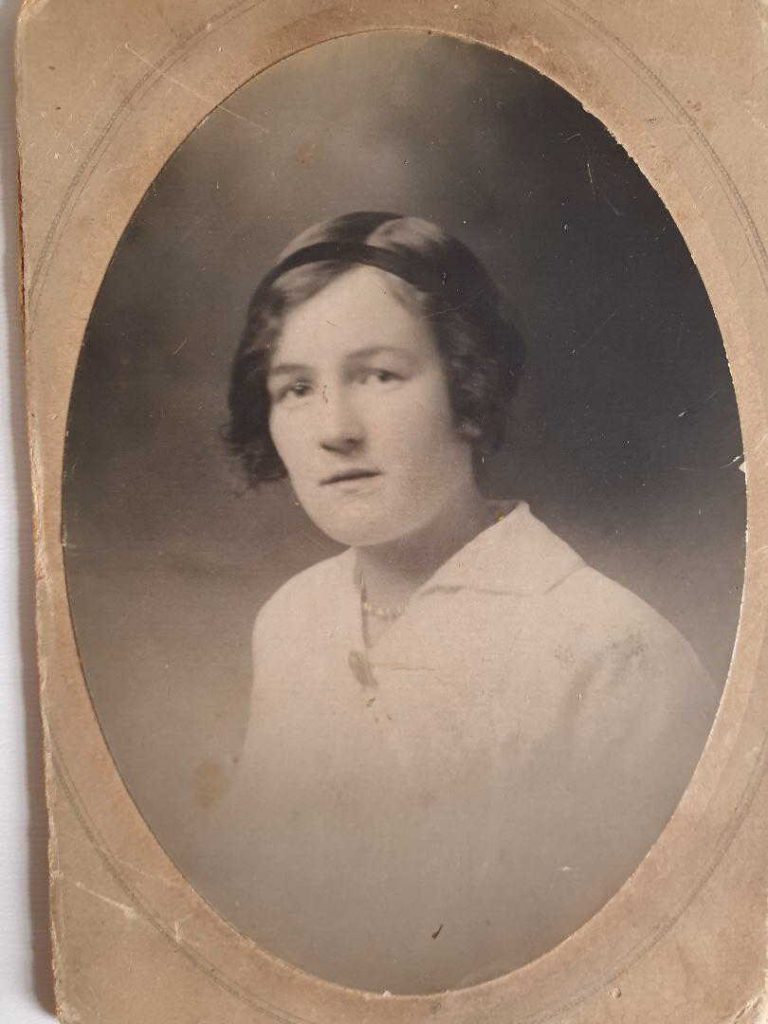
Mary Gerrie Esson c 1920. Kindly shared with the museum by Mary’s family
Biography
Childhood:
Mary was the fourth child born to Alexander Esson (9 July 1858 – 28 June 1945), a butcher in Aberdeen, and Margaret Crofts (25 Mar 1866 – ? poss Sydney, Australia) from Whalsay, Shetland. Alexander and Margaret (Maggie) were married in Aberdeen on 21 Nov 1890, and had eight children in total, two boys and six girls. Tragically, both boys were killed in WW1, and three of the girls died as babies.
Parents: Alexander Esson and Margaret Crofts
Parent’s occupations: Father was a butcher.
Schools / universities attended and years of attendance:
Mary lived in Aberdeen and from the uniform she is wearing in the photograph below, it is likely she attended St Margaret’s School for Girls on Albyn Place. The photo shows Mary and her classmates doing a Physical Education class in 1909 or 1910, when Mary would have been 12 or 13 years old.
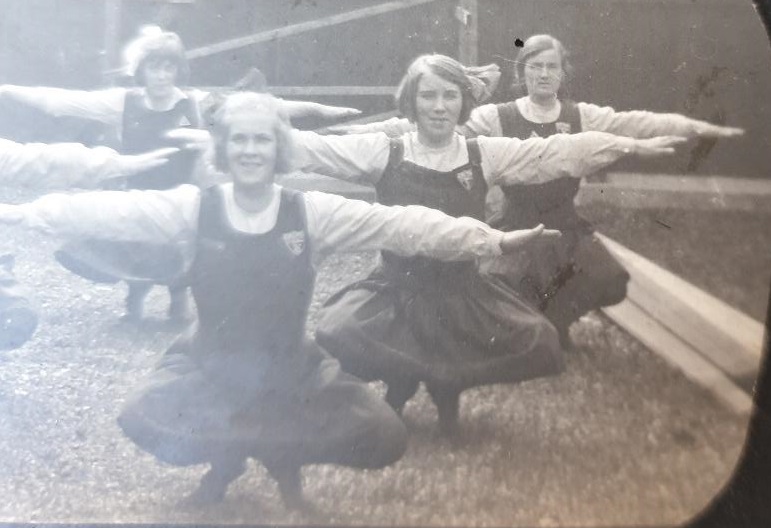
Mary Gerrie Esson, right rear, in school uniform (St Margaret’s
School for Girls?) participating in PE class. Image, c1909.
Occupational history (previous jobs in their career):
The census of 1911 reveals that Mary, then aged 14 years, had left school and was working at the Paper Mills but her job is illegible [‘? sorter’, perhaps]. At the time of her marriage in 1920, Mary was working as a Laundry Worker, living with her family at 71 Dunbar Street.
Occupation: Laundry Worker
Place of residence at Gretna: Unknown
Job title at Gretna: Munitions Worker. By 1916, Mary was working at the Munitions Factory in Gretna. She would have been twenty years old. She was given a triangular-shaped brass badge in acknowledgement of her war work.
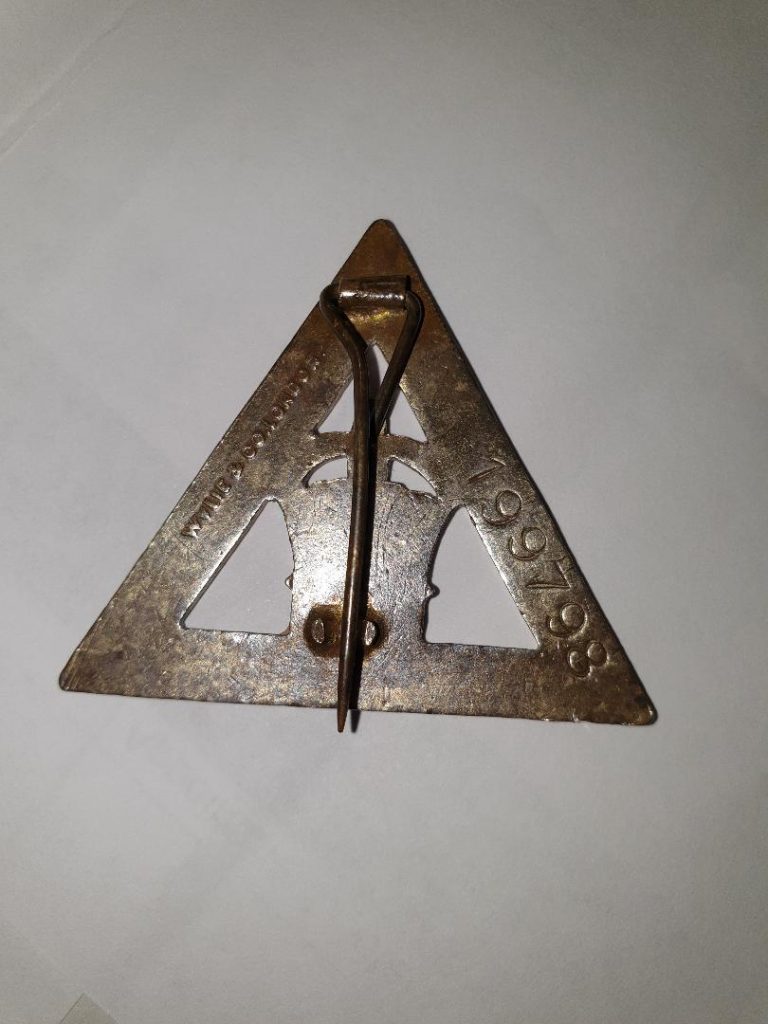
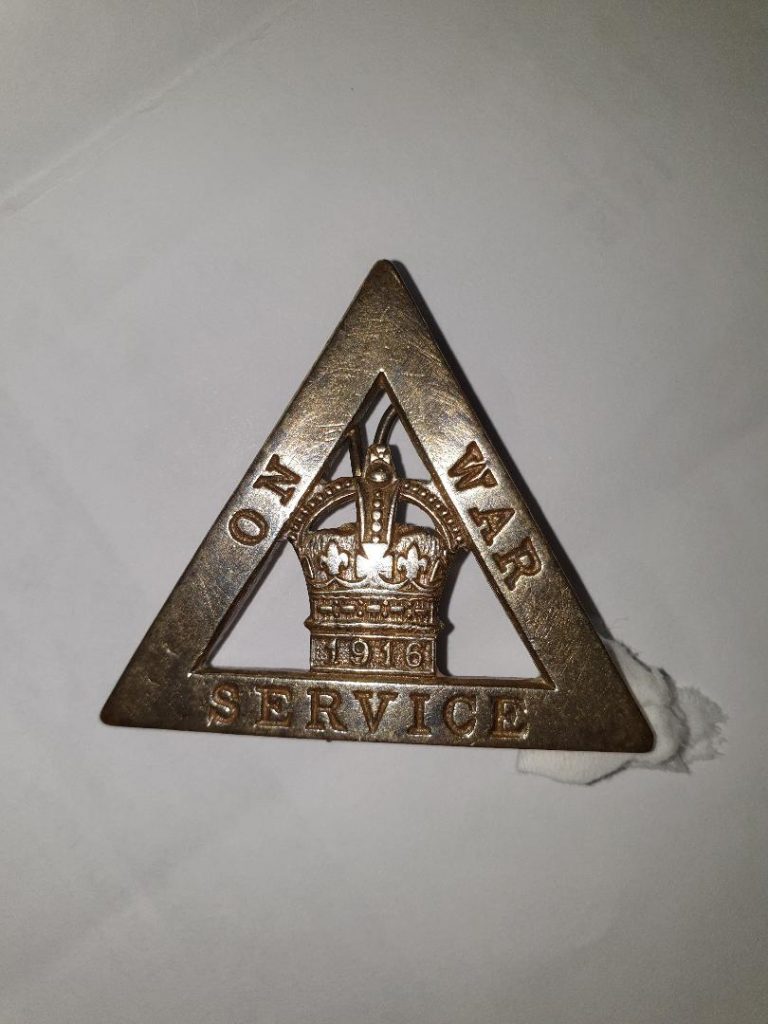
Mary sent a postcard to her mother, Maggie, in 1917, posing in her munitions factory uniform. The back of the card reads: ‘With Love from Mary to Mother. 24.4.17. D.E.S. H.M Factory. Gretna’
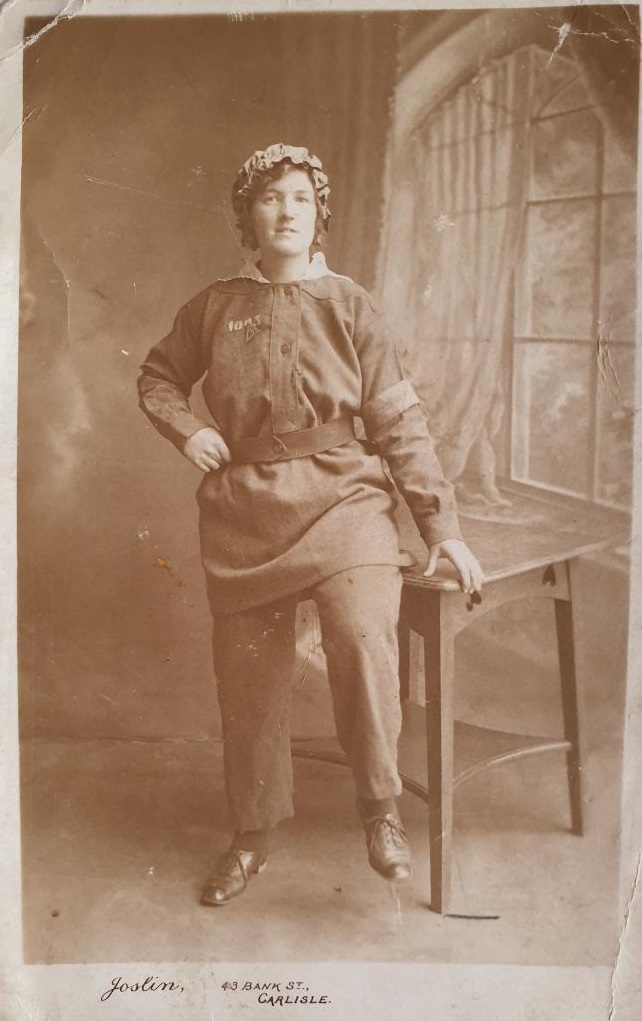
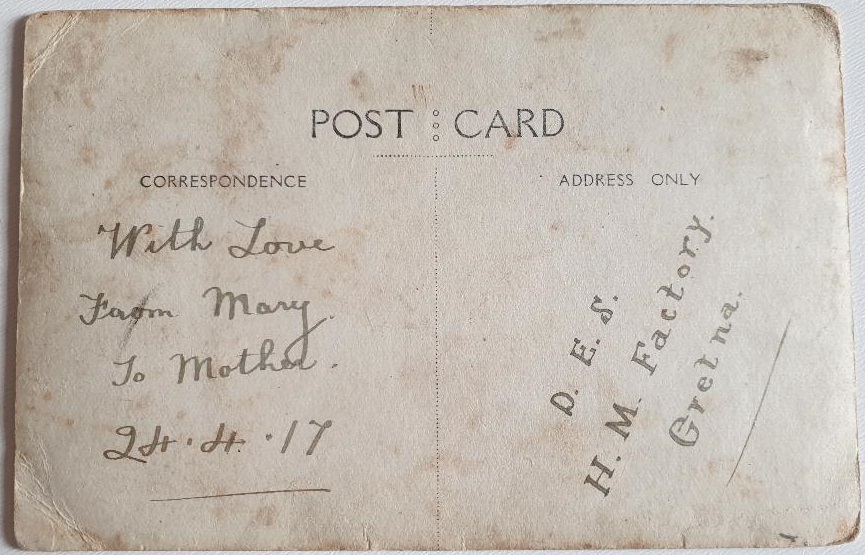
Marital status: Married to Charles Gordon Sellar Banks
Spouse name (including male name): Charles Gordon Sellar Banks
Date of marriage: 7 May 1920
Place/Parish of marriage: The Manse, Old Aberdeen
Children: Aileen Esson (1920-2013) and Charles Gordon Esson (1929-2008)
Travels: ‘The story that was told as I grew up was that Charles’ lungs were so bad that doctors recommended a warm, dry climate. So, in January 1925, the small family relocated to Auckland, New Zealand where they spent several years. My father, Charles Gordon Esson (known by his family as Gordon) was born in Auckland on 20 December, 1929. His birth certificate notes that there was another boy born to Mary and Charles in the years between Aileen and Gordon, but he had died at birth. As the years passed, Charles’ health became progressively worse, and as he realised he was going to die, he wanted to die back in Scotland. So, the family of four returned to Aberdeen in May 1933 aboard the Rangitane from Wellington, New Zealand – Aileen was 12 years old, and Gordon was three. Charles Gordon Sellar Banks died on 25 July, 1936 aged 40 years, succumbing to acute asthma. He is buried in the Nellfield Cemetery, Aberdeen.’ – from Catriona, Mary’s granddaughter.
In 1939, with a second World War brewing in Europe, Mary decided to migrate permanently to New Zealand. Shipping records show that Mary, aged 42, Aileen, aged 18, and Gordon, aged 9 sailed on the Orontes from London to Sydney, disembarking on 14 February, 1939. While the ship itself was due to sail to New Zealand, the industrious Mary left Aileen looking after her young brother at Circular Quay and managed to secure accommodation for them all (at the Salvation Army hostel, 140 Elizabeth Street, Sydney) and a job for herself as a seamstress. And so, the family’s plans changed, and they ended up settling in Australia.
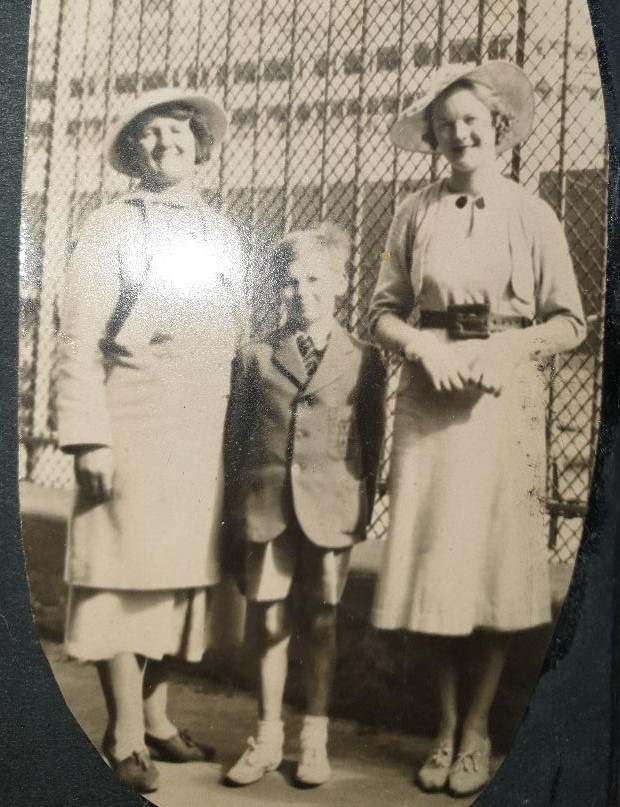
Aboard the Orontes, February 1939.
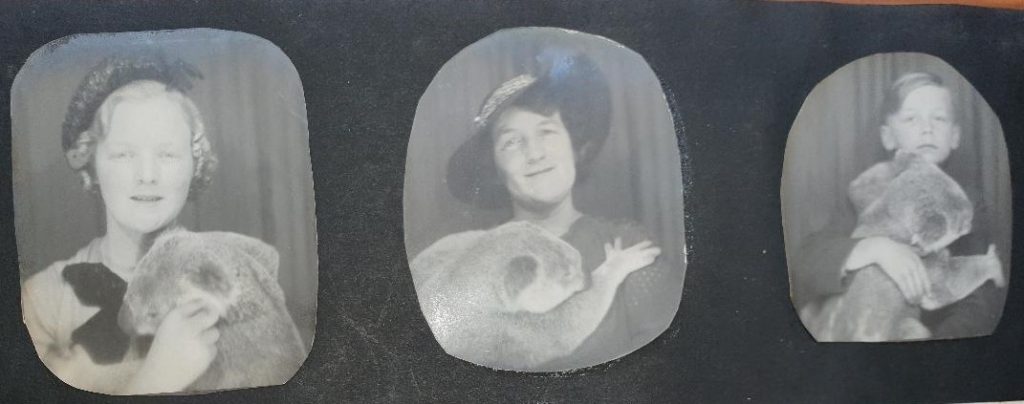
Above: Mary, Gordon, Aileen. Above: Aileen, Mary, Gordon with appropriate Australian prop.
Info from Dot, Salvation Army Museum research assistant:
‘I found a reference to the Orontes on the 23rd February of that year with some of the passengers travelling under a new Salvation Army Empire Settlement Scheme. I know that is a different date to the one you have noted. The arrival of the ship was well recorded. I almost gave up because the only references seemed to be to single men and women who had come to Australia under that program. But the article from March 11 page 6 in the second paragraph mentioned, not only these people, BUT a widow and her son and daughter. I believe that the program was under the umbrella of the “Empire Settlement Act 1922” which was an agreement between the British government and some of the Commonwealth countries (eg Australia and Canada) in regard to migration. The Salvation Army was part of this program – along with various other parties – who managed their own programs under the oversight of the Commonwealth. ‘
They stayed only a few years in Sydney before moving once more, this time to Melbourne. Gordon (now known as Charles) went to boarding school in the rural town of Kilmore, attending Assumption College on a scholarship. Charles was a brilliant student and school records show that the College followed his academic and professional career for many years after he had finished Matriculation. Interestingly, Assumption College Kilmore is a Catholic school run (in those days) by the Marist Brothers. It was around this time (c.1941) that Mary, Aileen and Charles converted to Catholicism from Presbyterianism. Charles talked about it in terms of expediency – the family were befriended by the Headmaster of Assumption College who suggested that it would help their case for a scholarship if they were Catholic. So, the family were baptised at St Mary’s Cathedral in Sydney before their move to Melbourne.
The electoral roll of 1942 shows that Mary and Aileen were living at 12 Lorna Street, Moonee Ponds, an inner-western suburb of Melbourne. At the time it was a fairly industrial area, dominated by a huge munitions factory on the nearby Maribyrnong River. Both Mary (aged 46) and Aileen (aged 22) were listed as munitions workers at the Maribyrnong Ammunition Factory. I am not sure what type of work they did at the factory, nor how long they worked there, but I assume they both wanted to do their bit for the war effort, given the involvement of so many of their family members in World War I.
By 1949 Mary and Aileen had moved from Moonee Ponds to the eastern suburbs of Melbourne, settling eventually at 1 Avenue Athol, Canterbury. In the electoral roll of 1954 Mary’s occupation was listed as Home Duties. As she was only 58 years of age, and had always been an energetic, intrepid person, I wonder if her health had begun to decline. Mary Gerrie Esson Banks died at the age of 68 on 18 November 1964. Her death certificate states that she succumbed to stomach and liver cancer. She is buried at the Box Hill Cemetery. The inscription reads: ‘In loving memory of Mary Esson Banks. Died 18th Nov 1964. Beloved wife of the late Charles Gordon Banks of Aberdeen Scotland. Devoted mother of Aileen and Charles’.
Awards/recognitions:
Trivia / any other information:
Mary applied for a war widow’s pension in 1936, but her application was denied. One can only imagine what a difficult time this must have been for a young widow with two children to support in a post-war United Kingdom. What a bitter blow to have lost your husband whose health was fatally compromised due to his involvement in the war, and not be granted a war widow’s pension.
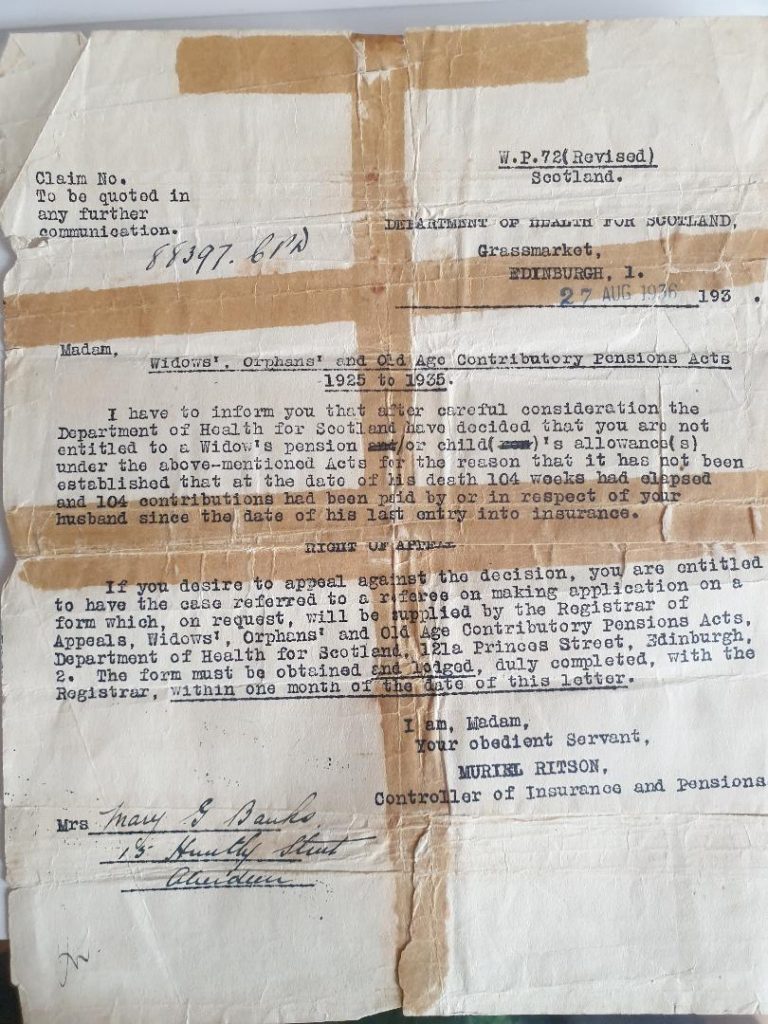
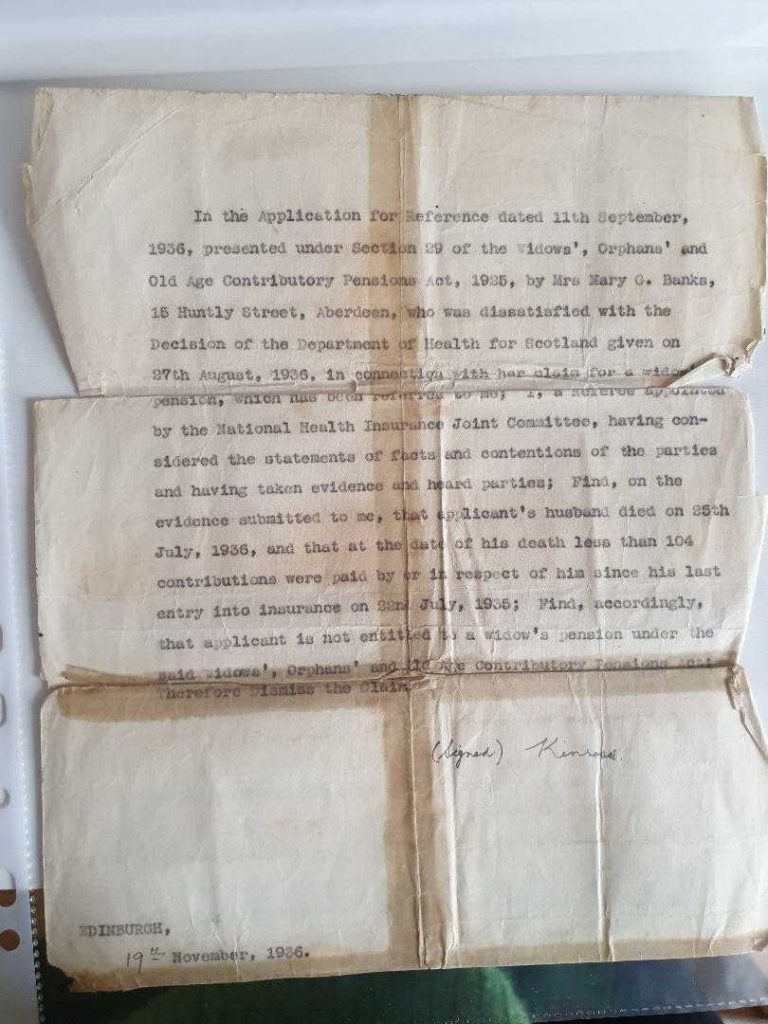
Aberdeen Scotland
Melbourne Australia
